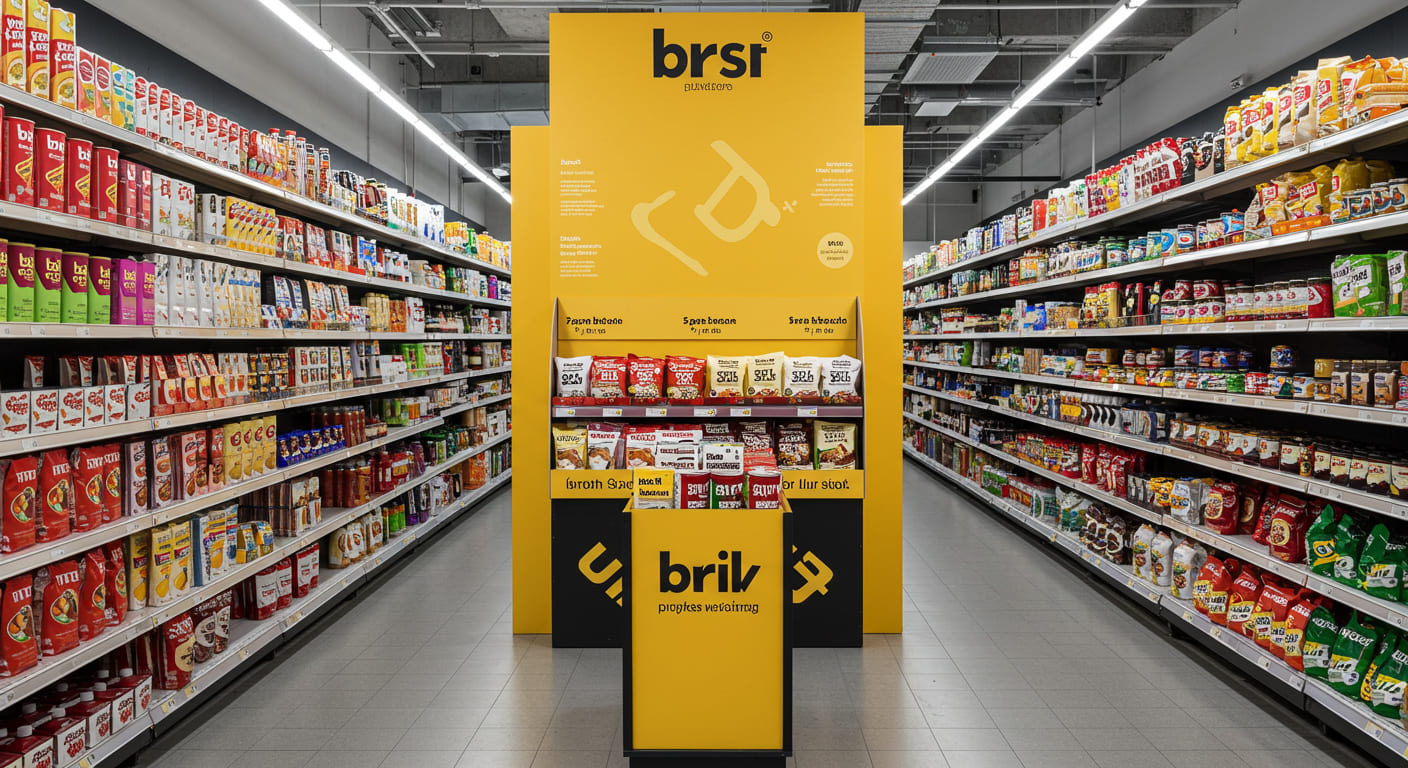
How Can Your Custom End Cap Display Dominate Sales?
Is your end cap display just another piece of shelving, easily ignored by busy shoppers? You are wasting the most valuable real estate in the store and leaving money on the table.
To make your end cap display dominate sales, you must apply five key strategies: use compelling color psychology, add interactive elements, tell a product story, create urgency, and place your best products in the golden sales zone.
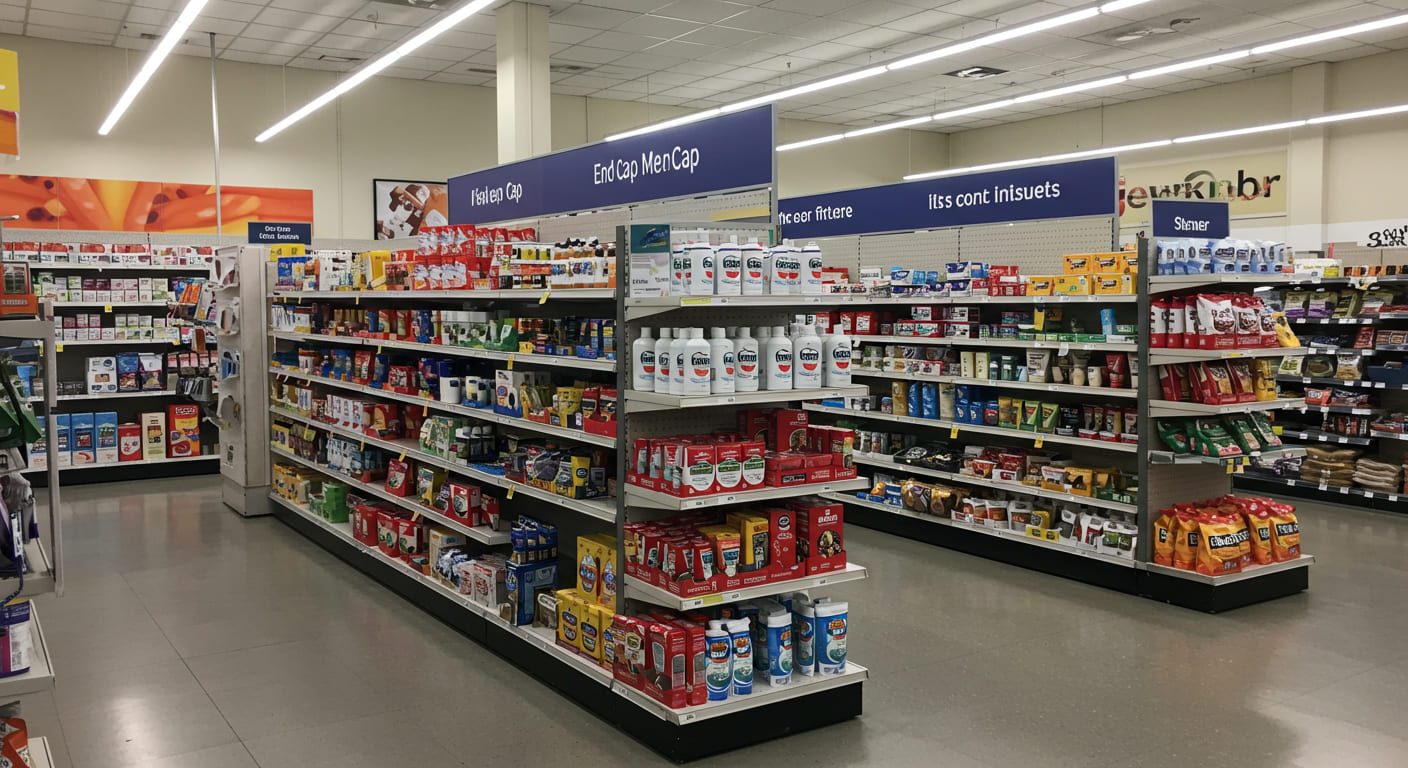 )
)
Everyone in retail knows that end caps are prime real estate. But just putting products on them isn’t enough. As a factory owner who has built thousands of these displays, I’ve seen what separates the displays that get ignored from the ones that become sales powerhouses. It’s not just about looking good; it’s about applying the science of sales directly to the fixture. These strategies will transform your display from a simple shelf into your best salesperson, stopping shoppers in their tracks and driving impulse buys.
How Can Color Psychology Stop Shoppers in Their Tracks?
Does your display blend into the visual noise of the store aisle? Shoppers are overwhelmed with choices, and they will walk right past a display that doesn’t immediately grab their attention.
Use bold, high-contrast, and on-brand colors to create a powerful visual hook. A bright backdrop or vibrant graphics can stop a shopper from across the aisle, giving your products the crucial three seconds of attention they need.
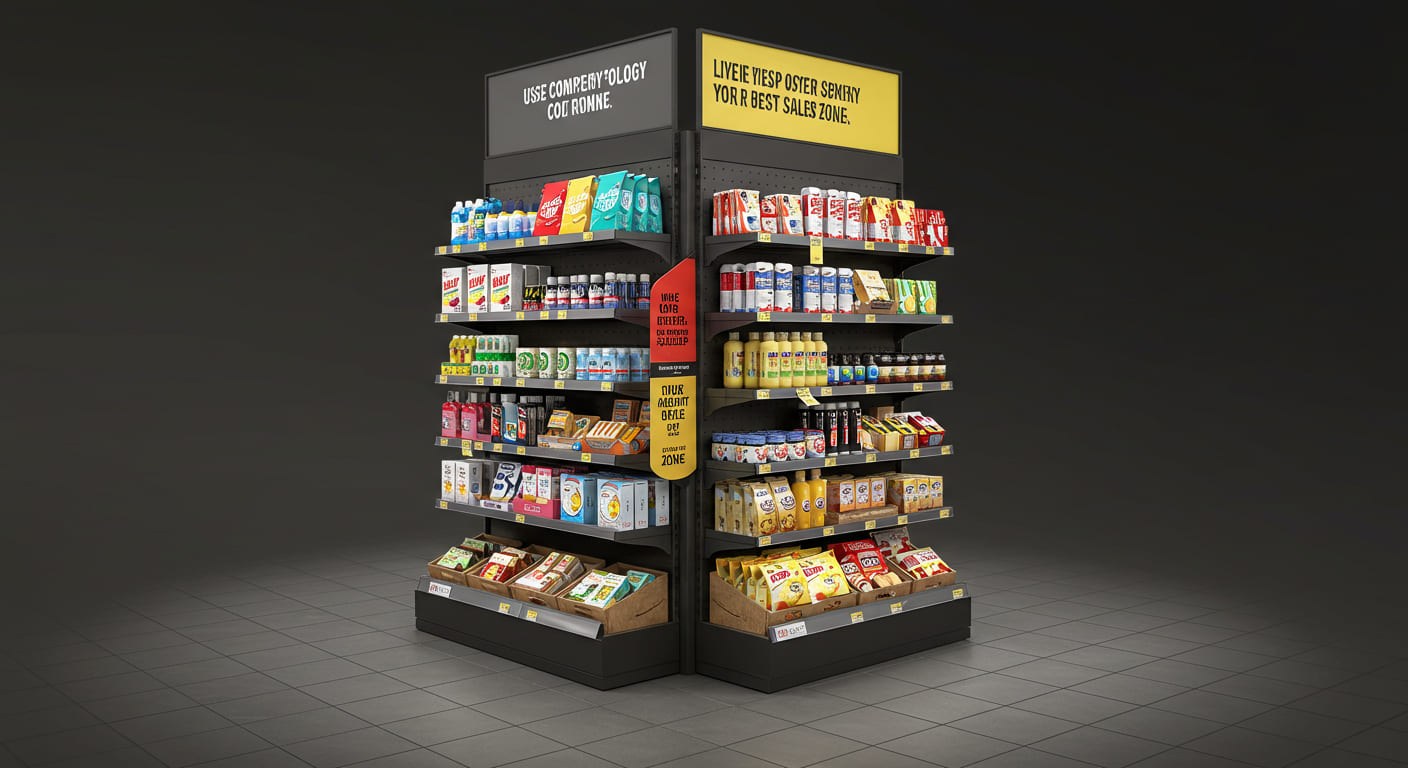
You have about three seconds to get a shopper’s attention. That’s it. In that short time, color is your most powerful tool. It works faster than text and creates an immediate emotional response. The right color choice can stop someone walking down the aisle and pull them over to your display. A client of mine was launching a new line of organic dog treats. The packaging was nice, but it got lost on the shelf. We designed an end cap for them where the main component was a large back panel. Instead of a neutral color, we used digital printing to make it a vibrant, grassy green. It instantly stood out against the beige store shelves and communicated "natural" and "healthy" before the customer even read a single word. It made the product the hero and communicated its main benefit from 50 feet away.
| Color | Common Emotion / Message | Great For These Products |
|---|---|---|
| Red | Excitement, Urgency, Sale | Clearance items, impulse buys, tech gadgets |
| Green | Natural, Health, Eco-Friendly | Organic foods, wellness products, sustainable goods |
| Blue | Trust, Professionalism, Calm | Skincare, financial services promos, high-tech items |
| Yellow / Orange | Optimism, Fun, Action | Toys, snack foods, seasonal promotions |
How Do You Turn an Onlooker Into a Participant?
Are your customers just glancing at your products and moving on? This passive behavior won’t convert into a sale, leaving your display as nothing more than expensive storage.
Add interactive elements like QR codes to watch videos, small touch screens with demos, or simple "try me" features. When a customer physically engages with the display, they transform from a passive onlooker into an active participant.

A static display is a one-way conversation. An interactive display starts a dialogue. It invites the customer to do something, which is a powerful step toward a purchase. We recently worked with a client launching a new kitchen gadget. The product was innovative, but its benefits were not obvious at a glance. We built an end cap that held the product securely, but the key feature was a small, embedded digital screen right at eye level. With a single button press, the screen played a 30-second video showing the gadget in action, solving a common kitchen problem. Shoppers could see exactly how it worked and imagine using it at home. The engagement was incredible. Instead of just looking, they were learning and experiencing. This simple addition of a screen and a button turned a confusing product into a must-have item.
Can Your End Cap Tell a Compelling Story?
Are your products just sitting there, looking like lifeless objects on a shelf? Without context or an emotional hook, your products lack the personality needed to create a real connection with a buyer.
Yes, your end cap is the perfect stage to tell a story. Use the backdrop and side panels to show the product in use, explain where it comes from, or build a lifestyle around your brand, creating a powerful emotional connection.
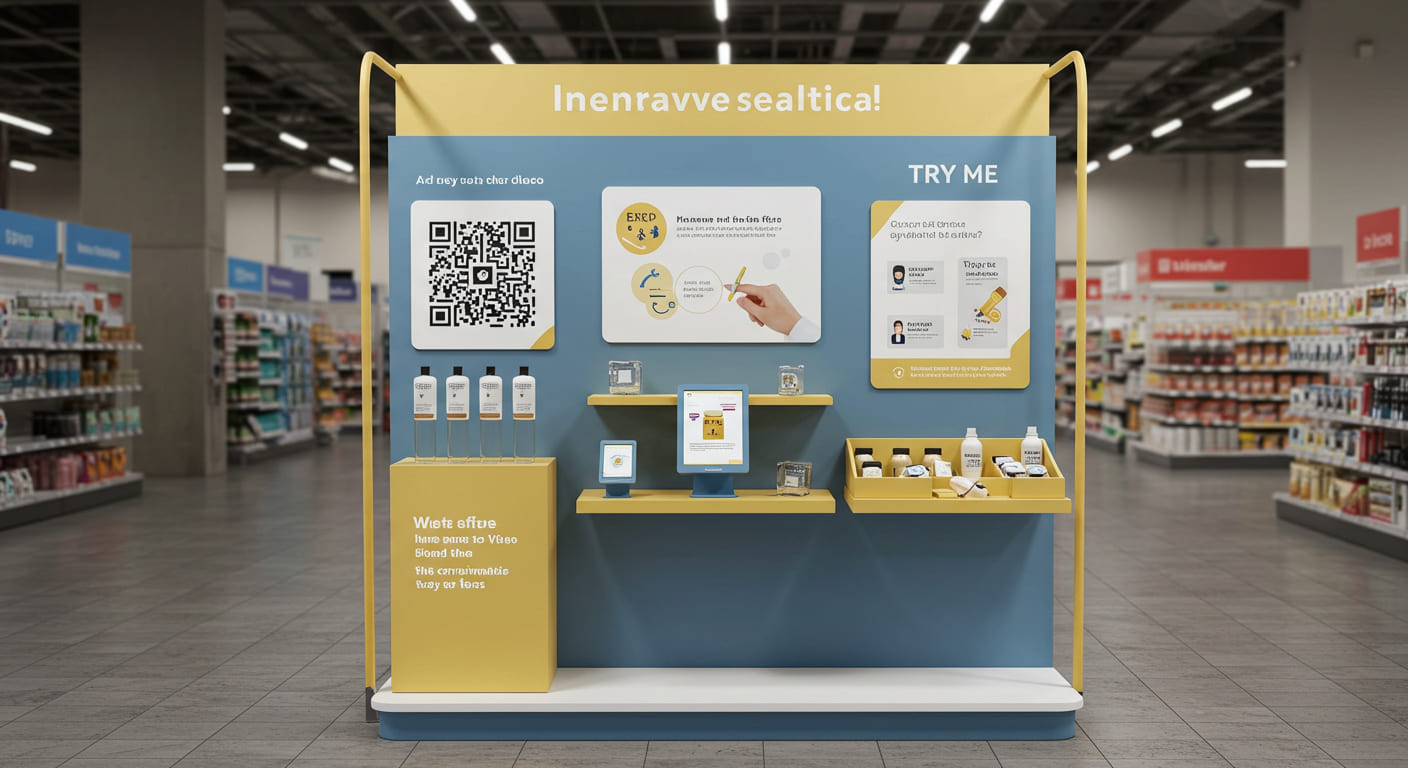
People don’t buy products; they buy better versions of themselves. Your end cap needs to sell that vision. Don’t just display your products; use the space to tell their story. I worked with a brand that sold premium pasta sauce. Their story was about using simple, high-quality ingredients from a family farm in Italy. We designed an end cap that looked less like a store shelf and more like a rustic Italian kitchen. We used graphics on the back panel that looked like a warm, tiled wall, and added a small shelf on top with a few "props" like a wooden spoon and a bundle of dried herbs. The display didn’t just scream "pasta sauce"; it whispered "authentic Italian dinner." This story-driven approach gave the product context and emotion, making it far more appealing than the jars sitting on the regular aisle shelf. It connected with the customer’s desire for a warm, family meal.
How Can You Create Urgency and Drive Impulse Buys?
Does the shopper see your product and think, "That’s nice, I’ll come back for it later"? That "later" often means a lost sale as soon as they turn the corner.
Use direct, unmissable messaging to create a sense of scarcity and urgency. Simple phrases like "Limited Supply," "This Week’s Special," or "Selling Fast!" push the customer to make a decision and buy now.
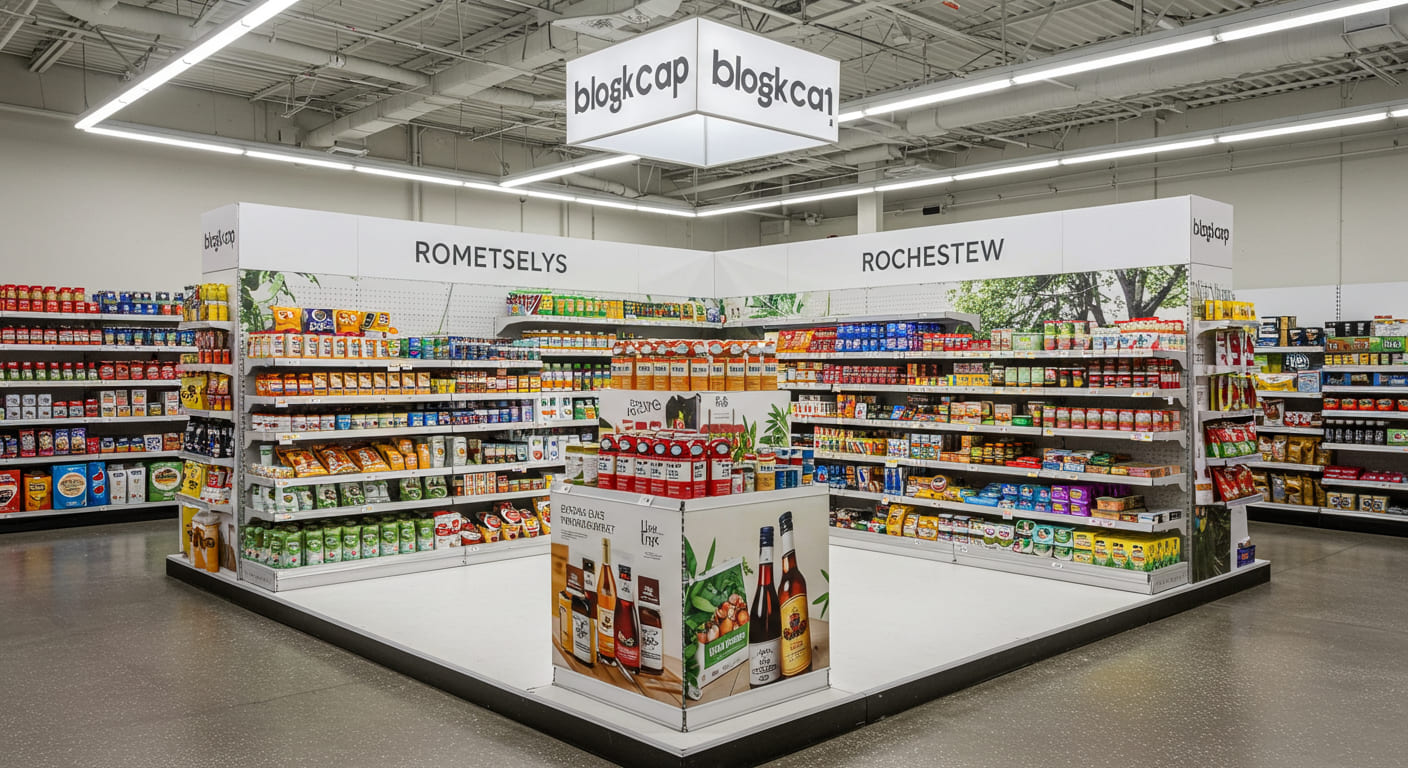
The fear of missing out (FOMO) is one of the most powerful motivators in retail. Your end cap is the perfect place to use it. A customer might be on the fence, but a little push can make all the difference. The key is to make this messaging easy to implement and change. When we build end caps, we often design them with modularity in mind. For example, we create simple, built-in sign holders or magnetic panels at the top or sides of the display. This allows the retail team to quickly slide in a new sign with an updated offer in seconds. A client who owns a chain of convenience stores uses this strategy masterfully. Each week, his end caps have a new "Weekly Deal" sign. The display structure is permanent, but the offer is always fresh and urgent. This simple technique keeps customers checking back and drives significant impulse sales week after week.
Are Your Best Products in the Golden Sales Zone?
Is your most profitable product sitting on the bottom shelf? Placing items without a clear strategy means you are letting your customers, not your business goals, dictate your profits.
The "Golden Zone" is the area between a shopper’s shoulders and waist. This is where you must place your highest-margin products to maximize visibility and the chances of a "grab and go" purchase.
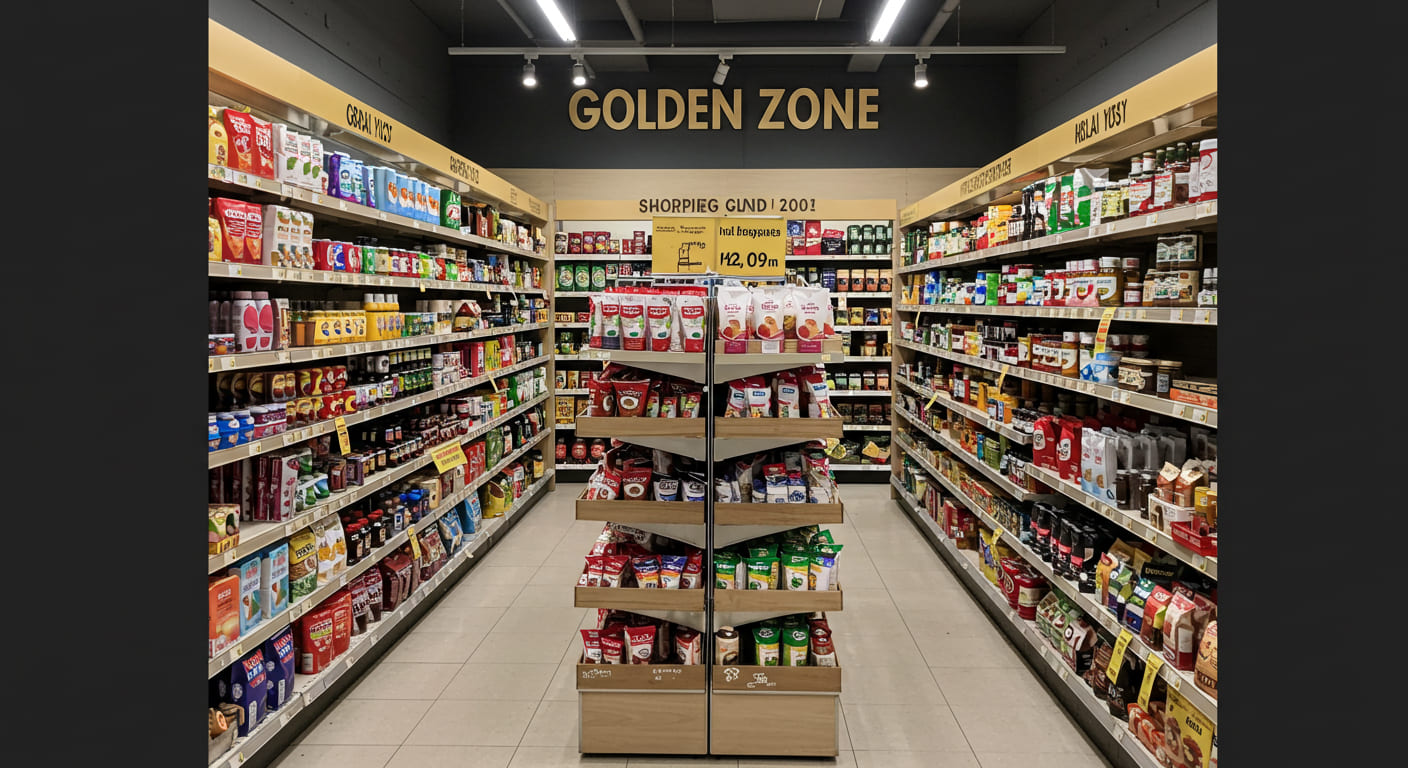
Think of your end cap as a tiny storefront with its own prime real estate. Not all shelf space is created equal. The area at eye and hand level is where the magic happens. It’s what people see first and what is easiest to grab. As manufacturers, we design shelves with this science in mind, ensuring they are positioned at the right height and can hold the right products. When a client comes to me, I don’t just ask what they are selling; I ask what they most want to sell. That product goes in the golden zone. Everything else is organized around it to support that main goal.
Here is a simple breakdown of how to plan your end cap layout:
| Shelf Location | Zone Name | Purpose |
|---|---|---|
| Top Shelf (Above Eye Level) | Billboard Zone | Your brand name, main message, or large signage. |
| Middle Shelves (Eye & Hand Level) | Golden Zone | Your most profitable items, new launches, and best-sellers. |
| Bottom Shelf (Below Waist Level) | Bulk Zone | Heavier items, value packs, or lower-priced companion products. |
Conclusion
By using smart color, interaction, storytelling, urgency, and golden-zone placement, you can transform your end cap. It will stop being a passive shelf and become your hardest-working salesperson, actively driving sales.